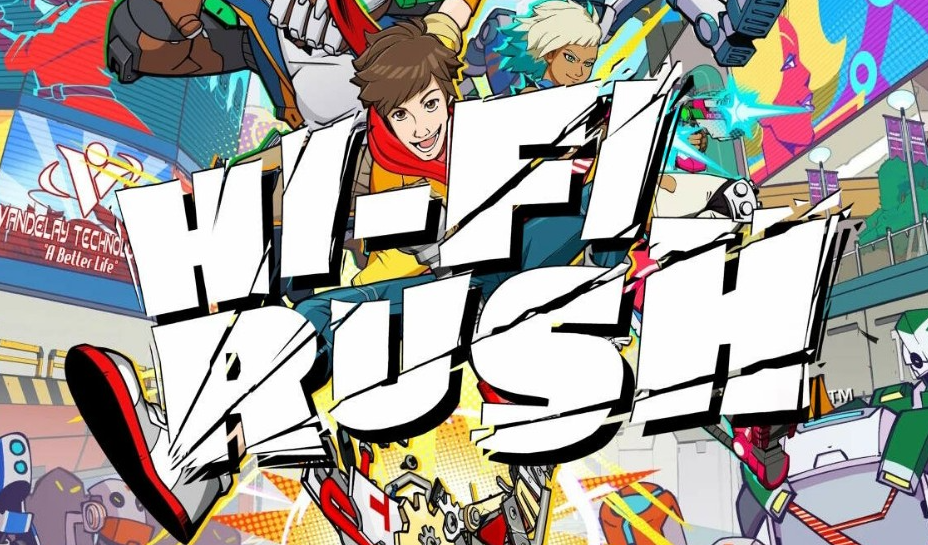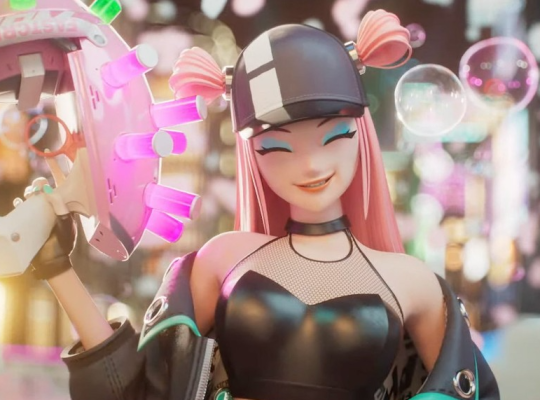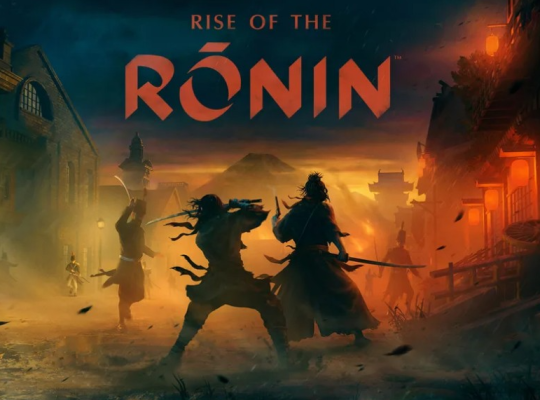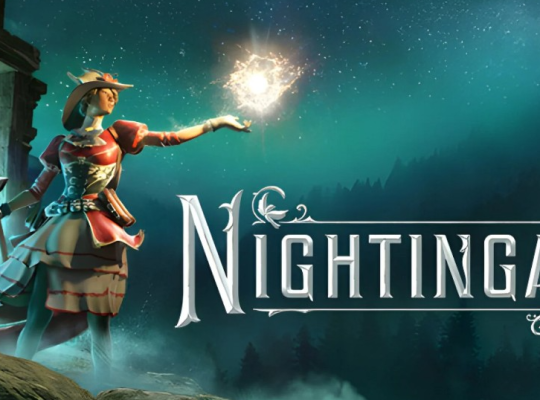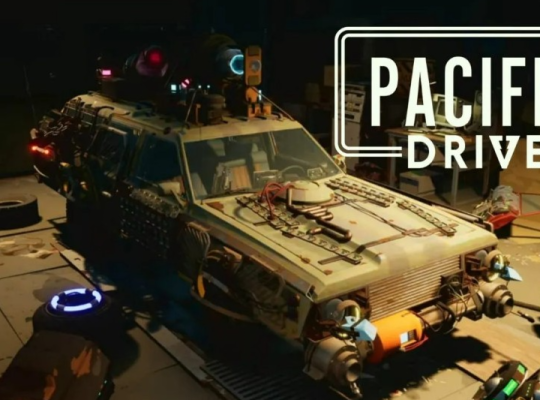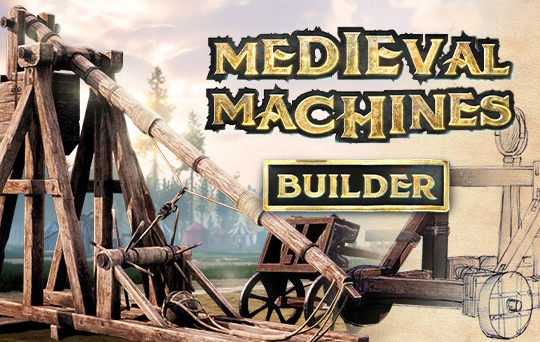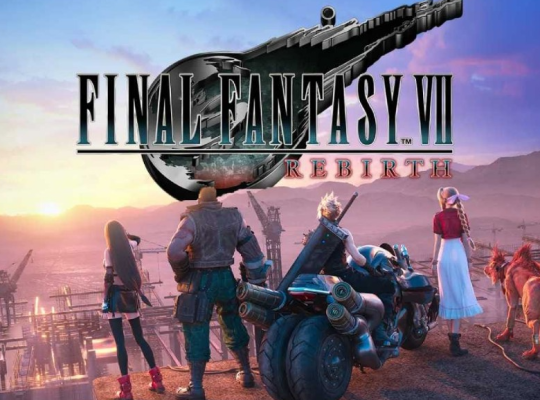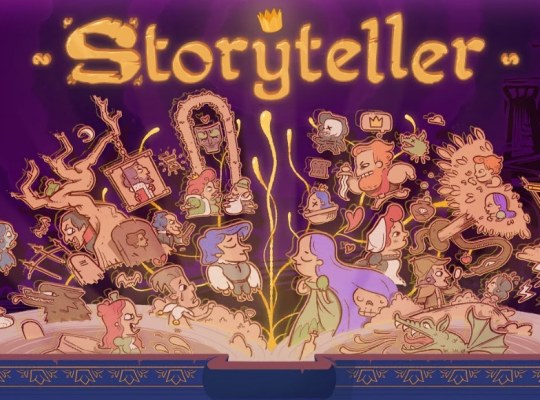Hi-Fi Rush took the gaming community by surprise with its unexpected announcement and release during the Xbox & Bethesda Developer Direct showcase. This action game seamlessly combines 3D beat ’em up combat, visually striking graphics, and captivating rhythm-based timing mechanics. The integration of music and tempo into every aspect of gameplay sets Hi-Fi Rush apart, providing a familiar yet entirely unique experience with its emphasis on timing.
While the game includes some finicky platform sections and certain forced mini-games that might be challenging for those struggling with timing, Hi-Fi Rush overall delivers an exhilarating experience deserving of an Editors’ Choice award. Priced at $29.99, the action-packed game is accessible on Xbox Series X/S (available as a standalone purchase or part of Xbox Game Pass) and PC (through the Epic Games Store or Steam).
The adventure begins with one of the most impressive openings, featuring stylized animation, an intriguing premise, and an engaging beat. The narrative revolves around the protagonist, Chai, who undergoes a unique transformation after a mishap during a repair by Vandelay Industries. With an iPod-style music device implanted in his body and a new arm attached, Chai becomes marked as a “defect” by Vandelay. The game follows Chai’s journey as he battles against Vandelay Industries’ security, bots, management, and eventually the owner, all set to a rocking soundtrack.
While Hi-Fi Rush may not claim the title of the year’s biggest release, it undoubtedly stands out as one of the most unexpected surprises. Stealthily launched following Microsoft’s Xbox showcase, the team behind The Evil Within took a sharp turn away from their usual tone, crafting an animated rhythm game that not only dominates its niche but has the potential to redefine the genre.
Hi-Fi Rush: Unleash the Rhythmic Mayhem
Embark on a high-energy journey with Hi-Fi Rush as you step into the shoes of Chai, a lively and somewhat airheaded aspiring rock star. Joining Project Armstrong with dreams of a new arm to fuel his rock ambitions, Chai’s story takes an unexpected turn when a robotic arm powered by a music player is accidentally fused onto his chest. Branded as a defect, Chai becomes the target of Vandelay corporation’s sinister agenda, leading to an alliance with rebels determined to take down the tech giant and its corrupt board of directors.
Despite its seemingly intricate plot, Hi-Fi Rush doesn’t take itself too seriously, focusing on delivering exhilarating robot-smashing action. The game’s primary strength lies in its gameplay, offering a surprisingly excellent action experience.
While it may lack the combo depth of Ninja Gaiden or the attack variety of Devil May Cry, Hi-Fi Rush compensates with a brilliant rhythm-focused foundation that enhances the combat and creates an addictively engaging experience. The mechanics encourage mastery without overwhelming players, providing a welcoming challenge akin to an encore invitation from the game itself.
Hi-Fi Rush maintains a strong focus on action but seamlessly incorporates light puzzles and platforming sections to add variety to the gameplay. Swiftly transitioning between dynamic set pieces, the game keeps the experience fresh and the pace brisk.
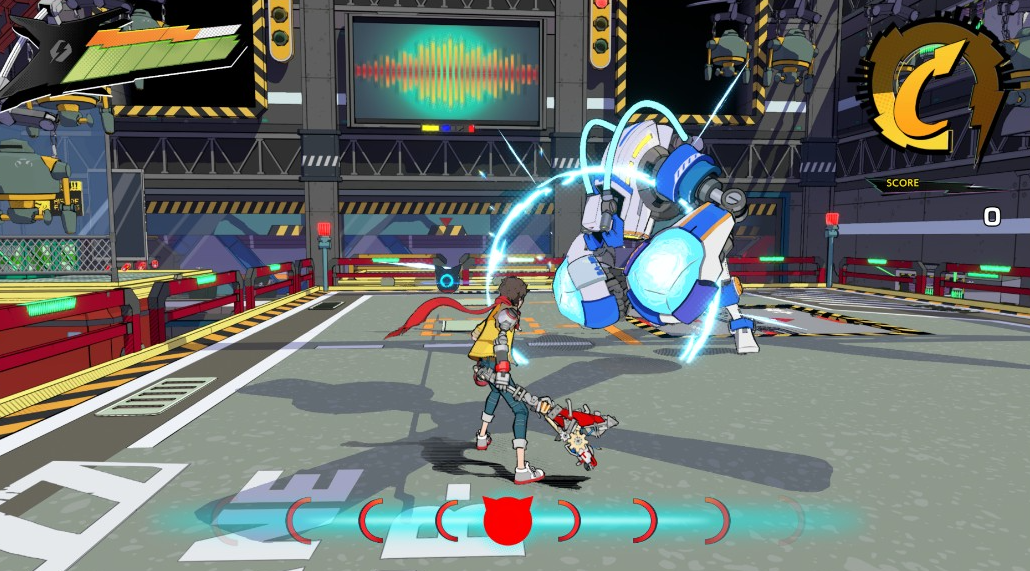
From navigating techno-colored chasms to engaging in optional fights and discovering hidden secrets, every moment is a rhythmic adventure. The hub lounge intermissions offer brief respites, allowing players to purchase new moves, track side-quest progress, or interact with 808, an adorable robot cat.
While Hi-Fi Rush may not claim the title of the year’s biggest release, it undoubtedly stands out as one of the most unexpected surprises. Stealthily launched following Microsoft’s Xbox showcase, the team behind The Evil Within took a sharp turn away from their usual tone, crafting an animated rhythm game that not only dominates its niche but has the potential to redefine the genre.
Hi-Fi Rush: Harmonize the Combat Symphony
In the rhythmic combat of Hi-Fi Rush, characters come together in a beat-based dance of destruction. Chai, armed with heavy and light attacks, seamlessly combines them into combos synced with the song’s tempo, culminating in a powerful finisher. Teammates, such as Peppermint and Macaron, can be summoned at any moment to lend their unique abilities – Peppermint’s gunfire for shield disruption, Macaron’s strength for armor smashing, and the final character with fire-controlling capabilities.
As you conquer bosses that challenge your parry timing and occasionally transform into literal rhythm games, the acquisition of additional moves and passive bonuses becomes possible. By the game’s conclusion, a repertoire of moves allows for dynamic sequences, such as grappling towards an enemy, launching them into the air, and unleashing a massive laser beam with Peppermint.
The enemies, synchronized to the beat with telegraphed attacks, enable strategic dodging and well-timed parries for optimal damage. Despite the rhythm game elements, the focus shifts, especially with upgrades, turning Hi-Fi Rush into a character action game, where combat routines and simple combos dominate.
The game introduces original songs with a consistent tempo, though lacking memorable tunes, contributing to a decline in the combat’s intensity. The absence of recognizable music and challenging tempo shifts results in a loss of the game’s initial vibrancy, transforming it into a character action experience with familiar button-spamming sequences. Notwithstanding a few boss gimmicks, Hi-Fi Rush falls short of presenting formidable challenges.
Music remains a vital element during exploration sections, where environmental hazards and platforming demand precise timing. Navigating geysers of lava and summoning teammates to break shields or doors becomes a rhythmic exercise, reminiscent of sidescrolling Mario levels.
However, the mid-2000s nostalgia, while providing a distinct vibe, begins to feel cumbersome during exploration. The abundance of crates to smash, collectibles, text logs, and power-ups slows down the pace, making some sections feel redundant. The allure of the mid-2000s era can’t fully compensate for the occasional monotony of navigating through extraneous content.
Dive into the Visual Symphony: Hi-Fi Rush’s Album Artwork
The visual spectacle of Hi-Fi Rush extends beyond its art style and environments to the technical prowess it showcases on current-gen platforms. Running seamlessly at 4K60 on the Xbox Series X, the game handles a plethora of on-screen elements without a hint of dropped frames, truly demonstrating its prowess.
The combination of captivating animation and flawless performance enhances the overall gaming experience. In a gaming landscape filled with various offerings, Hi-Fi Rush has managed to carve out its own space and captivate players across different preferences.
As a current-gen exclusive, Hi-Fi Rush presents a visual feast, making it challenging at times to decipher the optimal moments for actions like parrying, grappling, or utilizing allies. Despite the occasional complexity, the game effectively conveys a wealth of information, allowing players to navigate through the chaotic yet visually appealing sequences.
Despite its relatively short duration, averaging around 10 hours for completion on normal difficulty, Hi-Fi Rush maintains a sense of premium quality that surpasses many contemporary releases. Priced around $30, the game offers a compelling experience that defies its cost, raising questions about its placement in the market.
The narrative of Hi-Fi Rush revolves around the futuristic mega-corporation Vandelay, engaging in the familiar theme of corporate malfeasance and privacy invasion. While the story may not be groundbreaking, it serves its purpose by propelling players from one boss encounter to the next. As Chai, a human with a robotic arm deemed defective by Vandelay, players navigate a world where the corporation deems human life disposable, adding thematic depth to the action-packed journey.
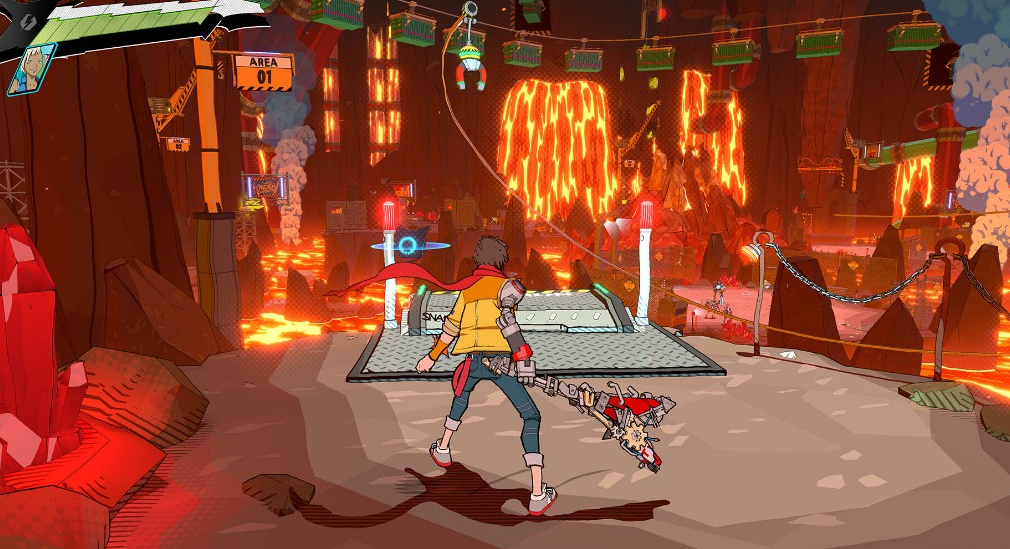
Experience the Rhythm: Unveiling Hi-Fi Rush’s New Tracks
Hi-Fi Rush takes players through diverse levels, each representing different arms of the fictional Vandelay corporation, such as security, marketing, and research. The distinct environments, coupled with a gradual acquisition of new skills, puzzles, and platforming segments, contribute to a dynamic 10-hour gameplay experience. While the abundance of battle arenas may become repetitive for some players, the introduction of new robot variations adds occasional freshness to the encounters.
The platforming sections emerge as particularly enjoyable, despite a slightly imprecise character control. Exploring off the beaten path during the initial playthrough uncovers various currencies and resources. However, the New Game Plus feature truly rewards exploration with secret doors accessible after completing the game. The checkpoint system, without lives, ensures a player-friendly experience, allowing you to resume from strategic points, even during lengthy boss fights.
While the game revolves around music, a desire for more licensed tracks is expressed. Though the inclusion of additional licensed music might have raised the game’s price, the absence of more renowned tracks left room for improvement in the overall memorability of the experience.
Noteworthy moments featuring Nine Inch Nails and Zwan stand out, highlighting the impact of licensed music in enhancing game memories. The in-house tracks complement the game well, although they may not match the caliber of Grammy-winning compositions.
Putting the Punk in Cyberpunk: Hi-Fi Rush’s Rebellion
Hi-Fi Rush stands out as a cyberpunk game wrapped in vibrant cartoon aesthetics. Within a metropolis dominated by an oppressive megacorporation, the narrative revolves around Chai, a worker deemed defective after integrating a music player into his chest. This sets off an alt-rock-infused journey to overthrow the corporate hierarchy with the aid of allies and a metallic guitar blade.
While the story occasionally ventures into “anti-capitalism 101” territory and embraces quippy humor, these narrative choices align well with its light aesthetic. The game skillfully incorporates biting satire into its colorful world, making weighty themes more accessible across different age groups.
The dystopian setting is enriched with corporate propaganda posters and lore logs, using loaded humor to depict the exploited working class. A poignant poem by a maintenance robot echoes contemporary issues related to labor conditions and unionization in the gaming industry.
Beyond its narrative, Hi-Fi Rush embodies a rejection of the capitalistic constraints often faced by major studios like Tango Gameworks. It diverges from the typical AAA formula, avoiding an expansive open world and addictive hooks for prolonged engagement. Instead, it presents a unique fusion of rhythm and hack-and-slash action, transforming Devil May Cry into a music game. Even its rebellious art style rejects modern realism in favor of vibrant colors and an illustrative approach.
Style and Substance: Hi-Fi Rush’s Visual and Auditory Brilliance
Hi-Fi Rush captivates from the start with its distinctive cartoon art style, creating a visual spectacle that truly shines on the Xbox Series X. Vibrant colors, bold line work, and flawless performance position it among the best-looking games on current-gen consoles. Opting for illustrative perfection over detailed realism, the game’s aesthetic choices serve a dual purpose.
Every aspect of the game’s levels is meticulously animated to synchronize with the soundtrack, creating a dynamic and rhythmic environment. From pistons pulsating in beat within a factory to elevators moving in staggered rhythmic patterns, the entire world seems to dance to the music.
This serves as a natural visual cue, helping players stay on the beat even without the music, though a traditional beat-matching prompt can be toggled for those who prefer it. The visual elements are not just for show; they enhance the gameplay experience.
The soundtrack itself contributes to the mid-2000s nostalgia, featuring an original soundtrack of energetic rock tunes complemented by well-integrated licensed music during battles. The synergy between gameplay and music is exemplified in boss fights, where the soundtrack dynamically shifts with changing phases, introducing new attacks and patterns.
While personal preferences may influence reactions to the soundtrack, its functionality in enhancing the rock and roll energy of battles is undeniable. The incorporation of tracks like Fiona Apple’s “Fast As You Can” and The Flaming Lips’ “Free Radicals” showcases the game’s commitment to a diverse and exciting musical experience.
Hi-Fi Rush doesn’t compromise; it feels like a sincere expression of self from Tango Gameworks, rather than a project driven solely by commercial motives. The game’s authenticity and the team’s dedication to their vision create an experience that resonates with those who appreciate its unique blend of style and substance.
Memories of Recess: Hi-Fi Rush’s Unique Rhythm Combat
While Hi-Fi Rush shares similarities with games like Metal: Hellsinger, it confidently marches to its own beat. The game’s emphasis, particularly in the initial stages, revolves around melee encounters, prioritizing the flow of melee combos. The combat mechanics, initially limited, focus on a narrow range in front of Chai, the protagonist.
This design choice aligns seamlessly with Chai’s character—a spirited individual with dreams of becoming a rock star, reminiscent of Sokka for fans of Avatar: The Last Airbender. Eager to fast-track his musical aspirations through Vandelay Technologies (not Industries), Chai willingly participates in a mysterious program, hoping to kickstart his journey. However, when the experiment takes an unexpected turn (thanks to Chai’s stroke of luck), he discovers newfound rocking abilities fueled by the music within himself, quite literally.
Hi-Fi Rush sets itself apart by infusing rhythm into its melee combat, providing players with a unique and engaging experience as they navigate the challenges of Chai’s musical journey.
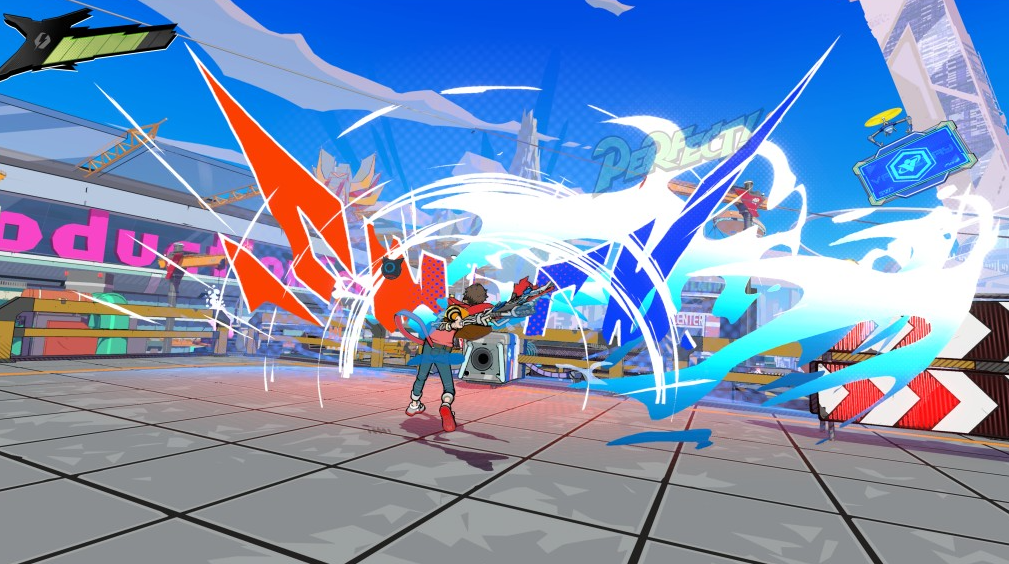
Jet Set RUSH-io: Hi-Fi Rush’s Harmonious Blend of Style and Gameplay
In the vibrant realm of Hi-Fi Rush, the game’s exceptional beauty defies easy description. It exudes a unique essence, reminiscent of a modern 3D anime brought to life, surpassing the visual appeal of many counterparts in both gameplay and cutscenes. Running seamlessly at 4K/60fps on Series X and 1440p/60fps on Series S, the title ensures a smooth gaming experience. However, amidst the visual splendor, combat readability can pose a challenge as the screen fills with chaotic elements, making it occasionally difficult to discern when to dodge, parry, or attack.
On the auditory front, initial impressions of Chai’s voice may be divisive, but over time, both the character and the actor’s portrayal unfold as excellent. The game’s exceptional writing, maintaining a genuinely humorous tone throughout, elevates the story and setting from an initially “ok” standpoint to an engrossing narrative. Each main character, including the villains, stands out due to outstanding voice work and well-crafted encounters.
The game’s soundtrack, predominantly a nod to the 2000s, resonates with a powerful impact. While not every song is licensed, the in-house tracks by Bethesda studio hold their own against heavyweight industry counterparts. Clean sound effects and effective positional audio contribute to the immersive combat experience. Accessibility options cater to diverse needs, offering settings for vision impairments and easing the demands of combat rhythm. The game’s bug-free performance stands out, offering a seamless eleven hours of gaming without crashes, freezes, or other technical hitches.
Wrapping Things Up with Hi-Fi Rush: A Surprise Gem in Action Platforming
Hi-Fi Rush burst onto the scene unexpectedly and left an indelible mark on me. It stands as one of the most visually captivating games I’ve experienced, showcasing sublime combat, an engaging story, and a music experience that seamlessly intertwines with gameplay. Tango Gameworks, known for its horror titles, has pivoted successfully to craft one of my favorite action platformers.
However, the game encounters a challenge in maintaining the exceptional quality throughout its entirety. While the final two levels and the concluding boss battle deliver a strong finish, the overall experience sees a dip in quality after the initial impressive start. This fluctuation, from a stellar beginning to a more average middle, may hinder the game’s lasting appeal.
Despite this, the undeniable truth remains — Hi-Fi Rush presents a fresh and innovative concept in gaming. It beckons to anyone seeking something different, adorned with a vibrant color palette, standing apart from the well-trodden paths of larger publishers.
Read More – Dota 2 Review: Your Easy Guide to Mastering the Game







